
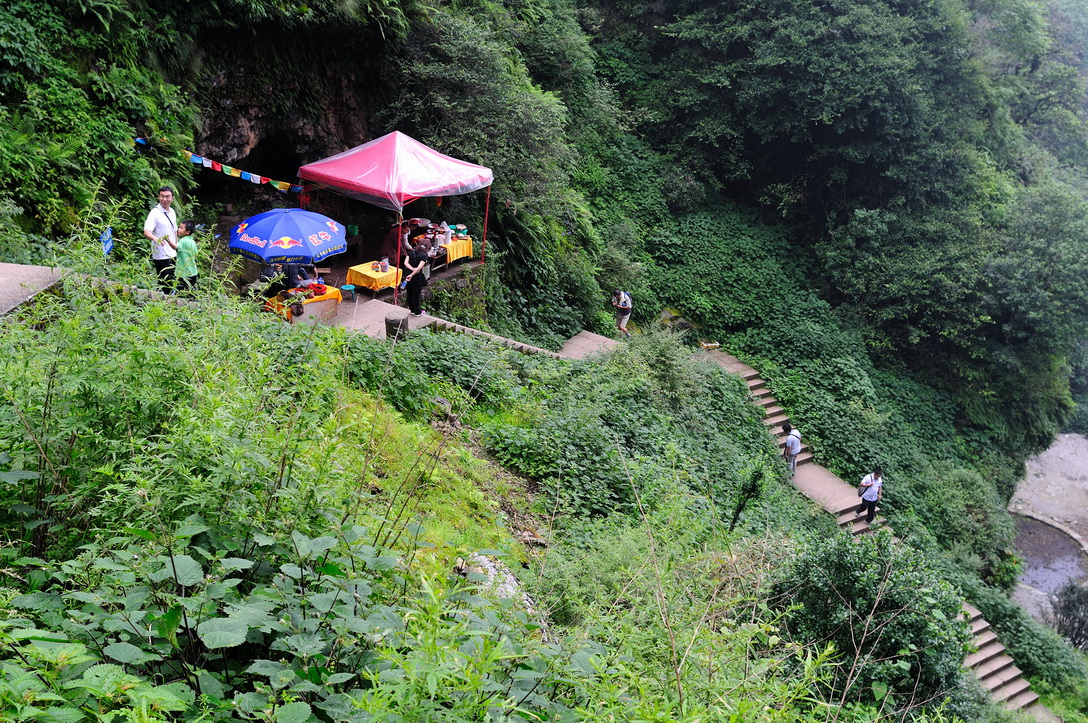

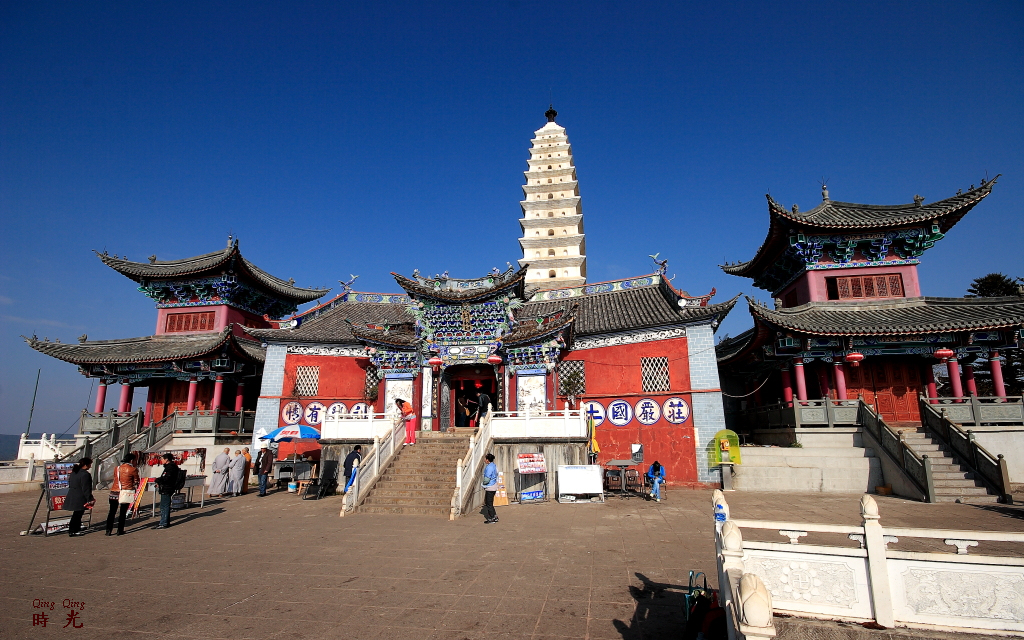
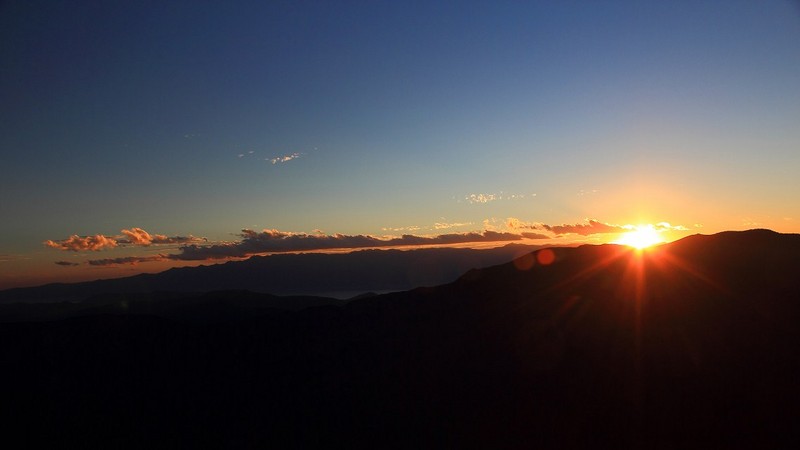
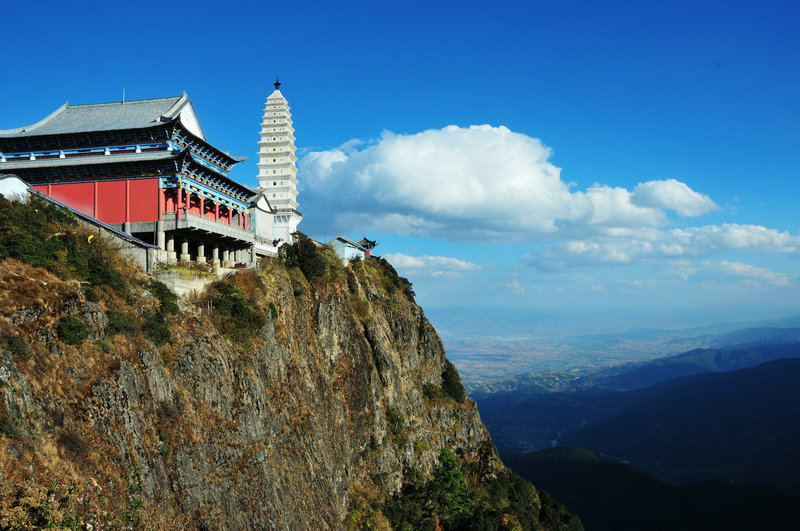
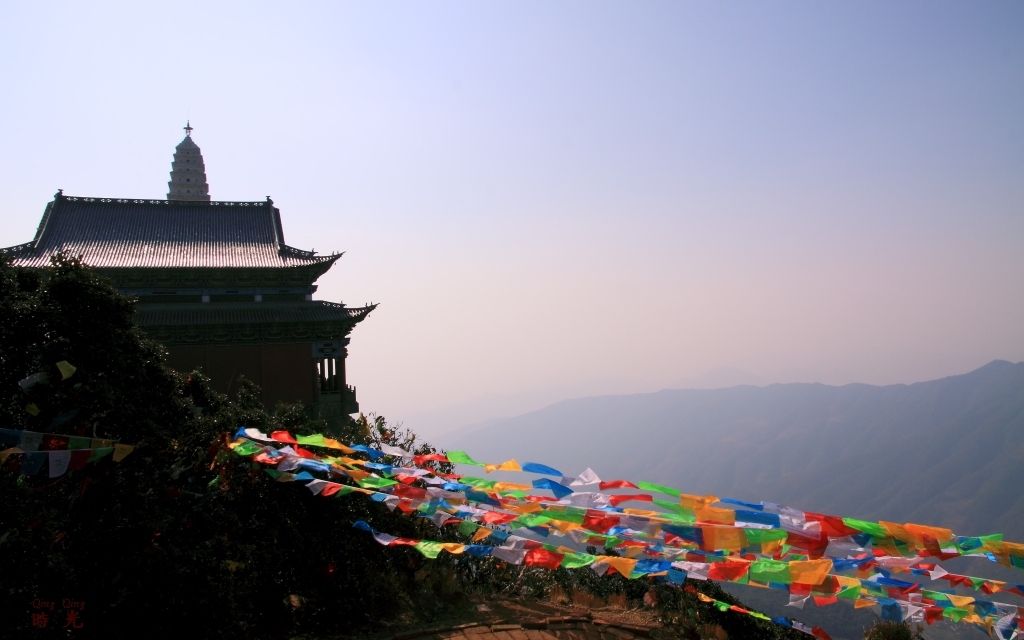




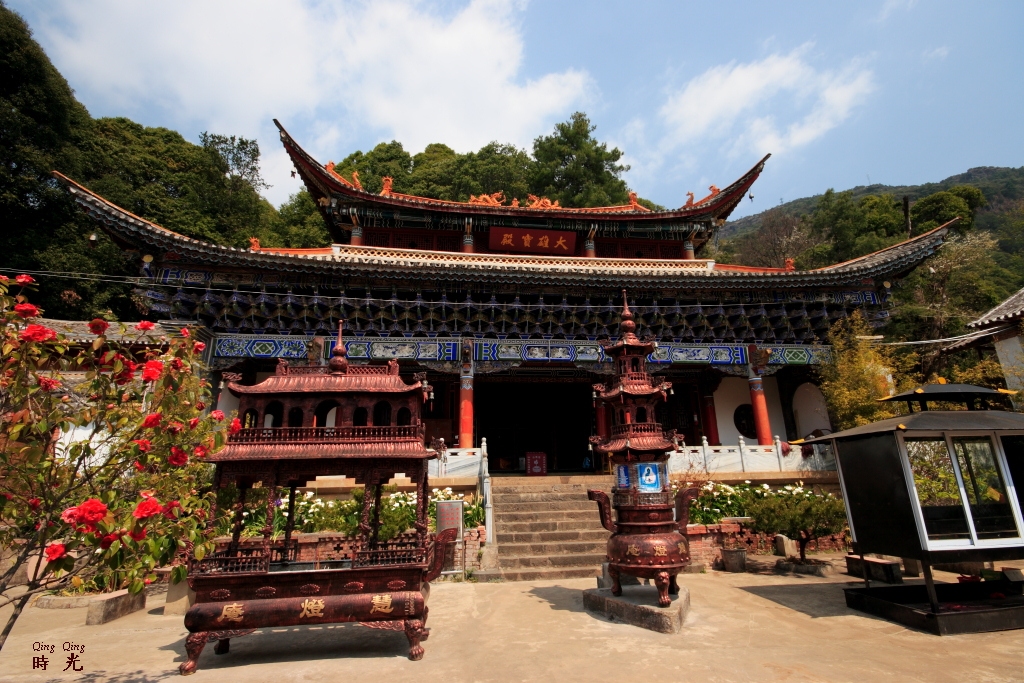



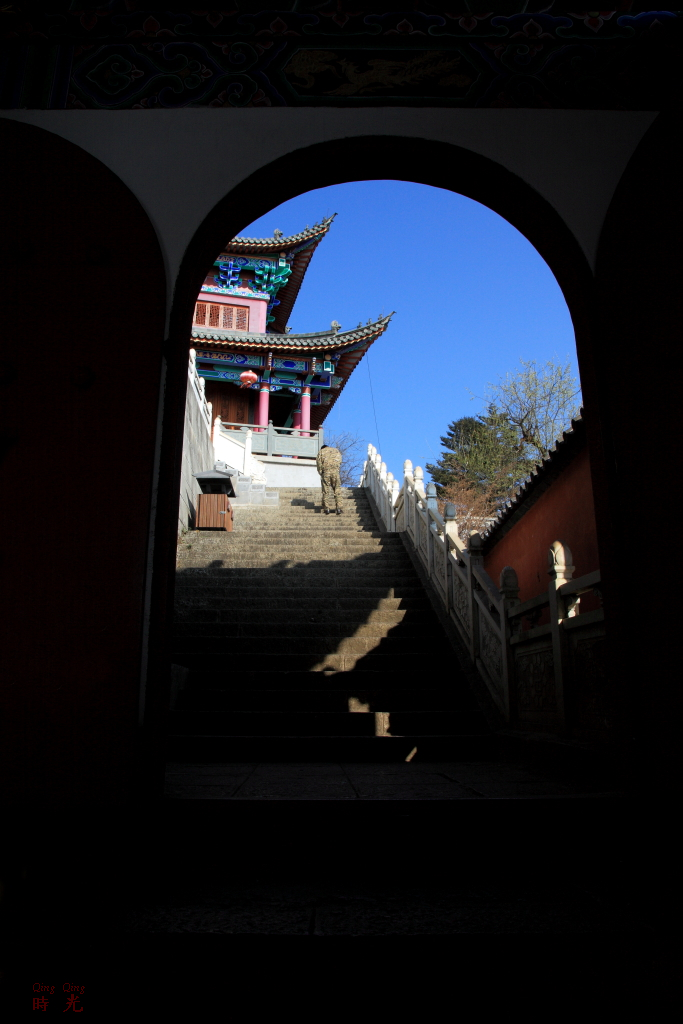

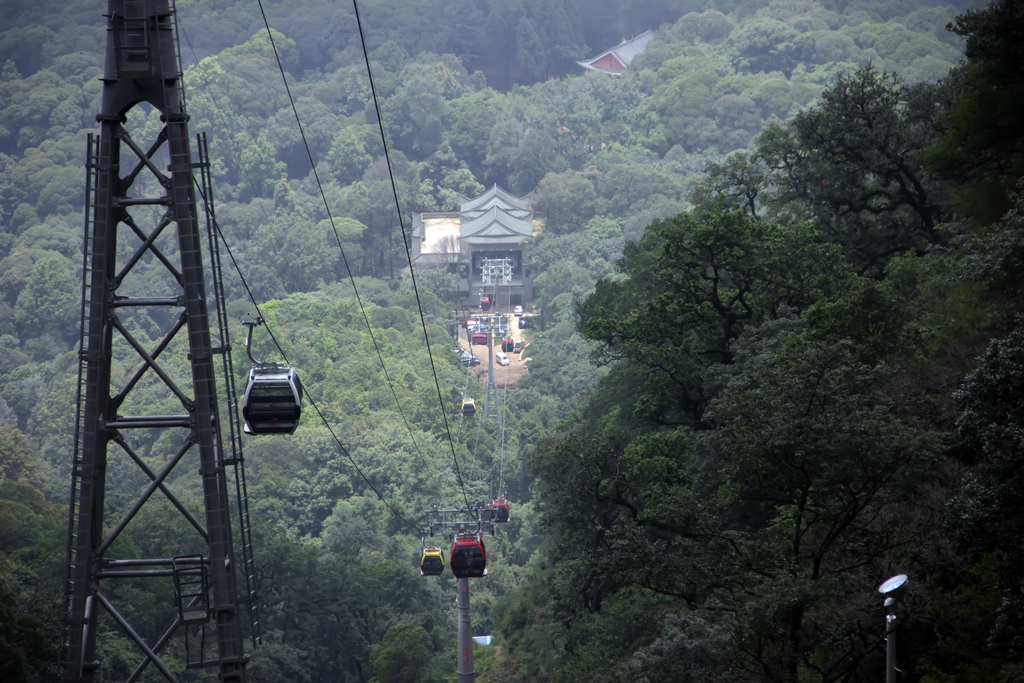
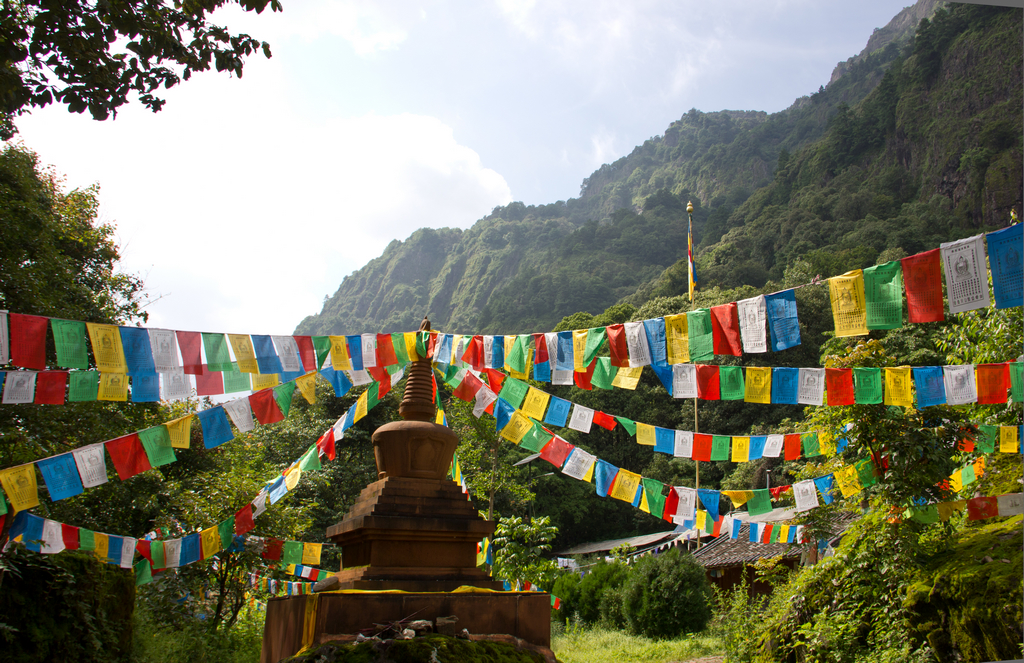



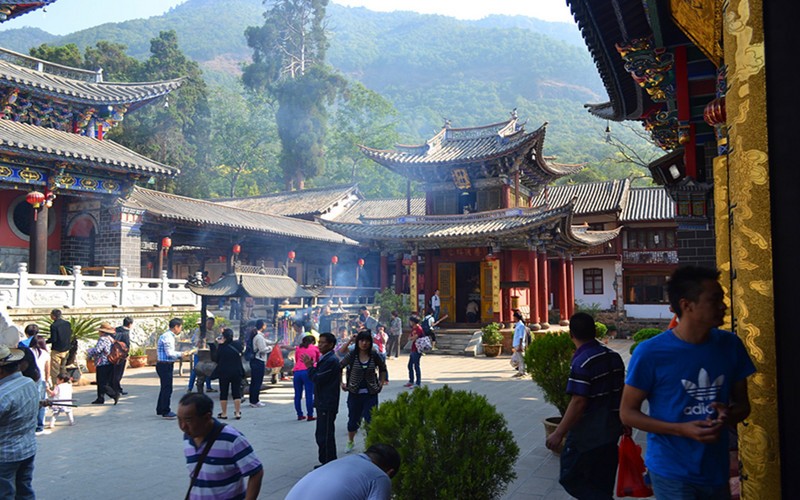


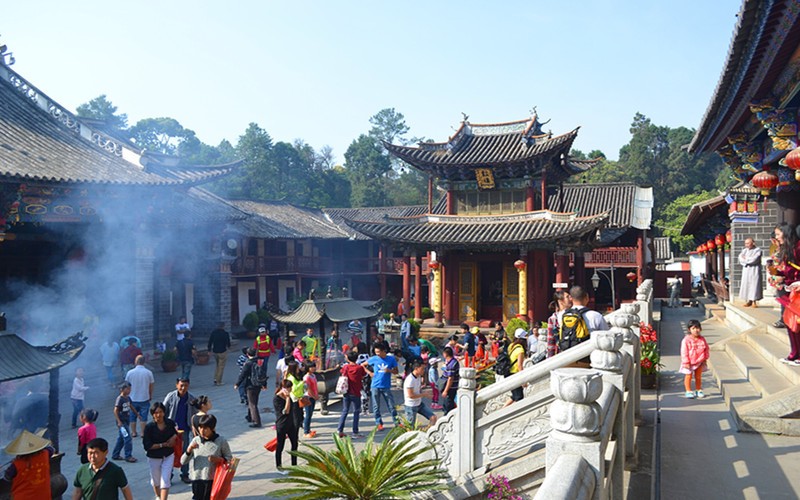
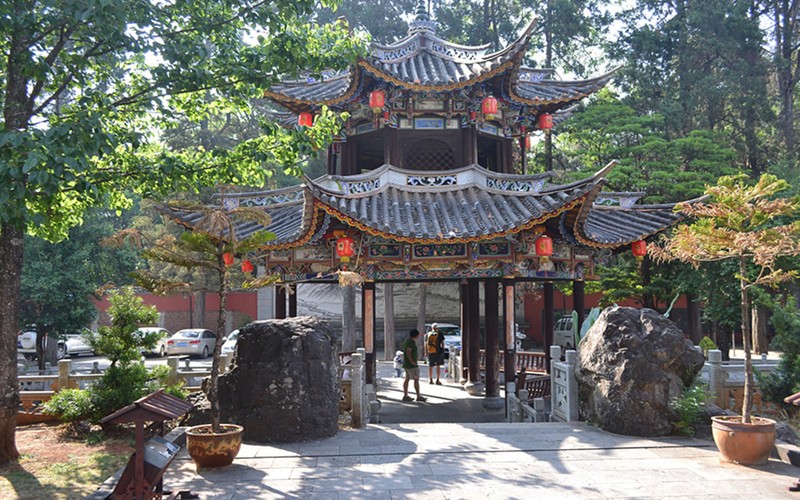



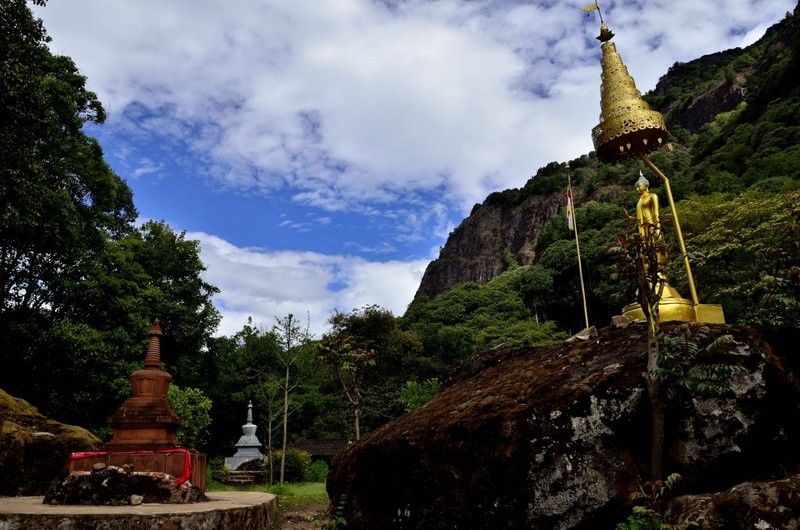

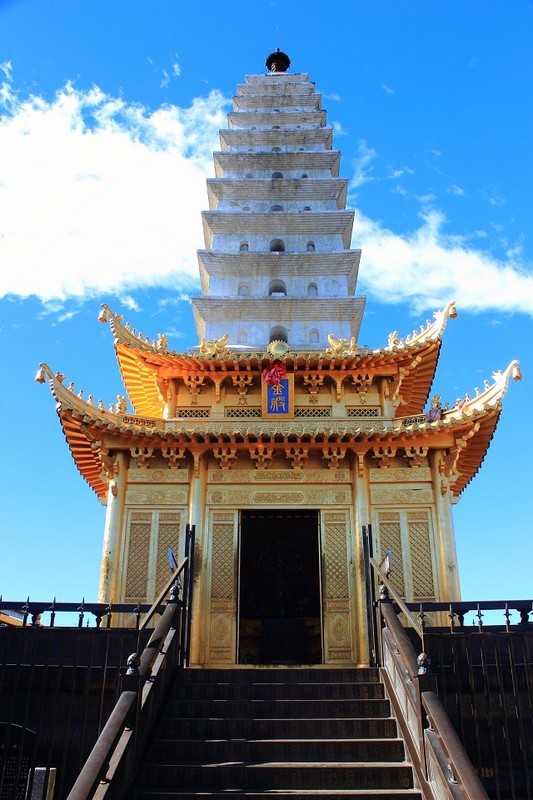
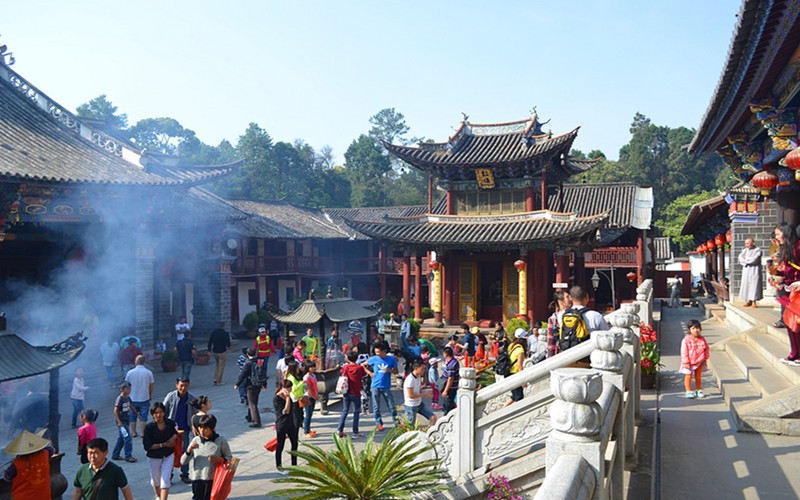


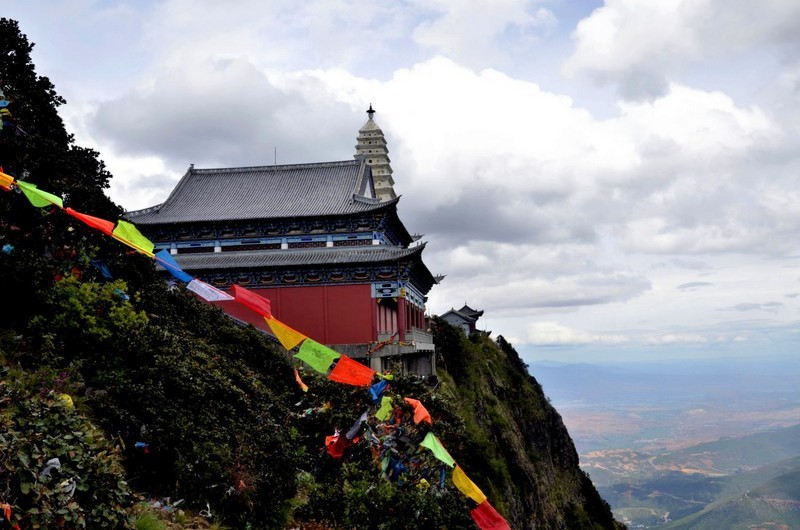

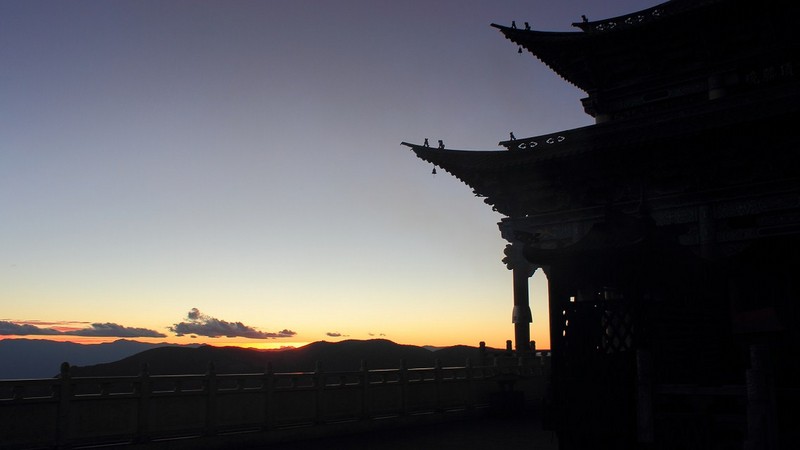




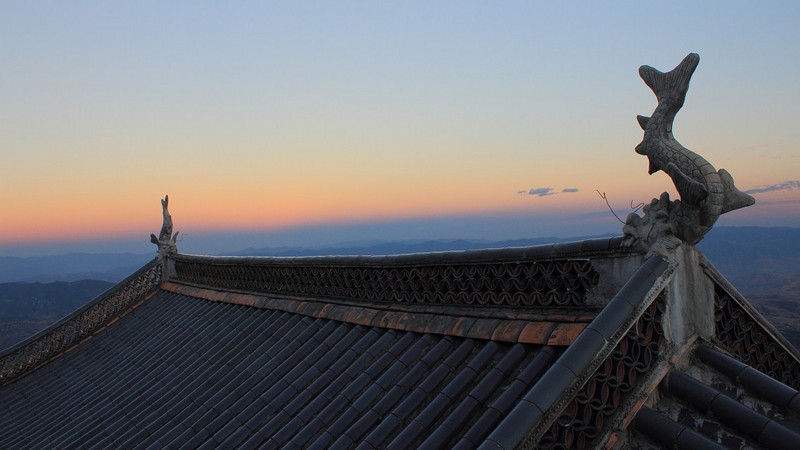
Key words:One of the four sacred Buddhist mountains of Chinese Buddhism.The Buddhist shrine of Southeast Asia
location:30 kilometers west from Bingchuan County, Dali Bai Autonomous Prefecture, Yunnan
Altitude:3248 m
Overview:
Jizu Mountain or Chicken Foot Mountain is one of the four sacred Buddhist mountains of Chinese Buddhism. Its name comes from the fact that this volcanic mountain is shaped like a chicken's foot with three hills on one side and a single hill at the back. Many of the temples on the mountain were first built during the Tang Dynasty, reaching their heyday during the Ming and Qing Dynasties. However, during the cultural revolution, many were razed to the ground. Now what still remains are the Jiuling Temple, Zunsheng Temple and Huideng Temple and a few other smaller temples. Besides these Buddhist attractions, you can also climb to the top of the mountain in the early morning and watch the sunrise. It is possible to make a round trip to the mountain top within a day, but lodging in the Bingchuan County is inevitable.
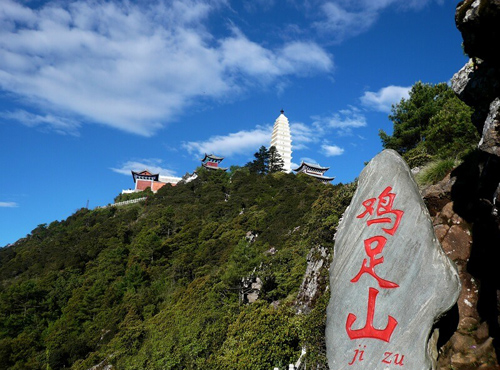
.And there are altogether 40 rare hills, 13 perilous peaks, 34 cliffs, 45 deep and quiet caves, hundreds of springs and ponds and innumerous ranges and valleys in Jizu Mountain. There scatter many ancient buildings of temples here and there in the valleys or in the forests. From the past to the present, it is well-known for its grandness, rareness, quietness and elegance. The Ming geographer Xu Xiake climbed it twice and compiled “Records of Jizu Mountain”. He spoke highly of the famous “4 sights” and “8 landscapes” in the mountain in his poems. He said “4 sights” included all the beautiful scenery of the past and the present and that it was rare if there was one of the “8 landscapes” in the country.
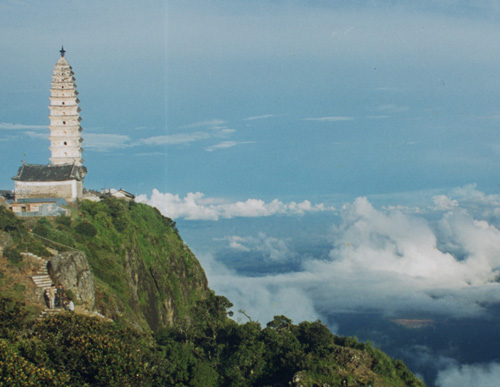
History
According to legend, the Shakyamuni Buddha’s first disciples brought gold grass-robe and the Buddha's relic – tooth toJizu Mountain.
During Tang Dynasty, there were full of temples. In Yuan and Ming Dynasty, the 8 temples and 71 jungles were built on the mountain, among which the Jiguang Temple was the main temple. During Qing Dynasty, the main temple is Zhusheng Temple, with other 35 temples and 72 nunnerys, with about 2000 or 3000 monks and nuns.
Highlights
Jinding Temple and Lengyan Pagoda
On the tallest peak of Jizu Mountain is a monastery that includes the ancient Jinding Temple and Lengyan Pagoda. The square-shaped pagoda was built after the Tang Dynasty, but it looks similar in style to the Tang Dynasty pagoda in the ancient city of Dali. But this was built at the top of a very high and steep peak. Imagine the work that went into its construction a thousand years ago! The attached Jinding hall has statues where Buddhists go to worship. The original Jinding Temple was moved from Kunming to this mountain in 1637. On a clear night, you can see the Milky Way and thousands of stars. If you stay in the accommodations nearby, you can see the sunrise.
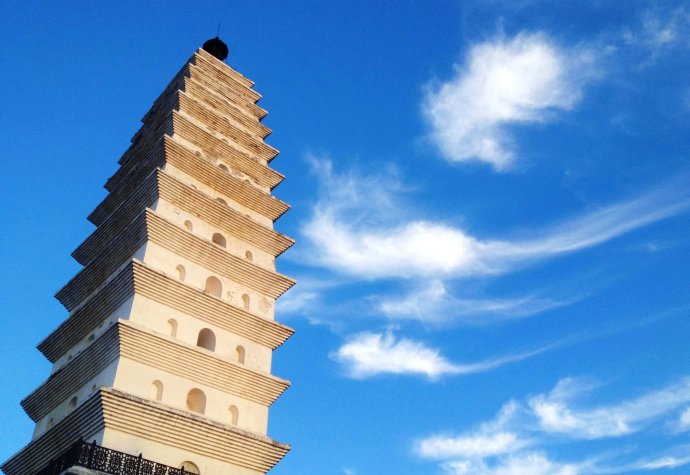
Lengyan pagoda
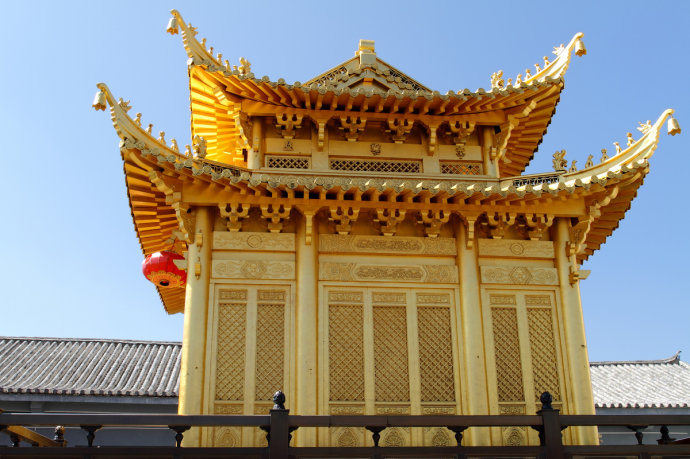
Jinding Temple
Hundreds of years ago, a Chinese traveler in the Ming Dynasty period named Xu Xiake (1586-1641) said: "On the top of Tianzhu Peak, people can admire the sun-rise in the east, a sea of auspicious clouds in the south, Cangshan Mountain and Erhai Lake in the west, and Yulong Snow Mountain in the north.”
Zhusheng Temple
As the largest temple on Jizu Mountain, Zhusheng Temple was first built during Ming Jiajing Period. In Qing dynasty, the famous Zen Master – Xuyun Monk raised money and built the temple. On the left wall of the temple, there is painted "the Panorama of Jizu Mountain”. In front of the gate, there is a semi-circular pond with an octagonal pavilion on it. The whole temple is in grand scale with rich ethnic and religious characteristics.
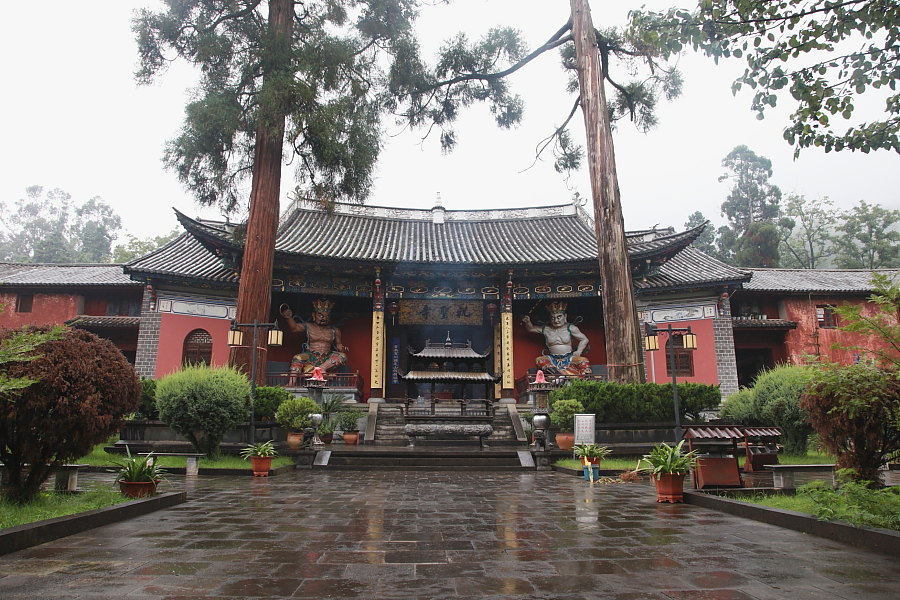
There were more than one hundred monasteries of different sizes and the noted ones were Xitang Temple, Shizhong Temple and Huayan Temple constructed in the Ming Dynasty and Jinding Temple (Golden Top) which had been moved from Kunming to the mountain. Later, many temples fell into ruins, and now, only Zhushengsi Temple, the gate tower of Jinding Temple and Lengyan Pagoda are kept in the original shape. Jizushan Mountain is one of the most famous Buddhist mountains in China.
4 sights and 8 landscapes
Jizu Mountain is naturally beautiful with the “4 sights and 8 landscapes”. The 4 sights are: sun sight, cloud sight, sea sight and snow sight and the 8 landscapes are: the Buddha’s light, the thunder in a clear sky at Huashou, snow at Cangshan Mountain, the mist on Lake Erhai, the pine trees, the flowing fall, the autumn moon in the yard of the pagodas. In addition, there are some other scenic spots, such as Huashou Gate, the fall at Yulong,the empty ancient tree. The scholars of different dynasties, for example, Yang Fu, Yang Shen, Li Yuanyang, Xu Xiake, Zhao Fan, Yuan Jiagu and Xu Beihong, visited Jizu Mountain and wrote poems or drew pictures to describe the scenery here. During the Festival of Worship on Jizu Mountain from January 1 to 15 (according to the lunar calendar) each year, tourists from all directions, even foreign countries, come here to visit. Nowadays, tourists can enjoy themselves on the Jizu Mountain due to the convenient transportation, for example, the tour road reaching from the county and the tour cable from Huideng Nunnery to the Golden Top.
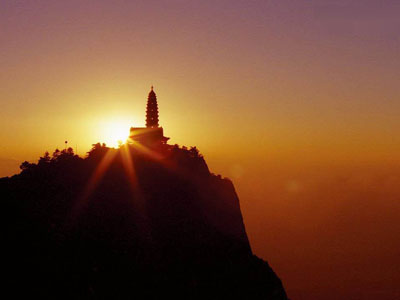
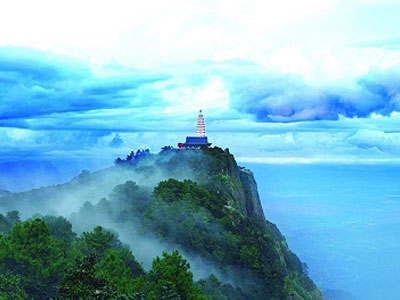
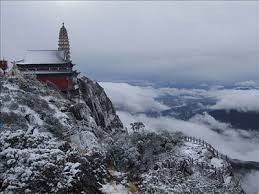
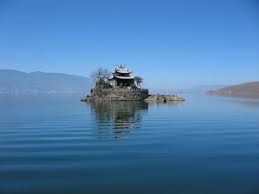
The tours including Jizu Mountain:
Fascinating attractions nearby:Admission Fee:¥60
Opening Hours:from 8:00 to 18:00
Attraction
Transportation:The straight line distance between the modern Dali on the southern shore of Erhai Lake to Jizu Mountain (Jizushan in Chinese) is only about 45 kilometers. But the driving distance around the lake and up a valley is about 100 kilometers to the town of Binchuan in a valley below the mountain. The trip to Binchuan from Dali takes about two hours. From there to the Huideng Temple is about another 30 kilometers, and buses and vans are available. There are horses, a walking path, and a cable car from there to Lengyan Pagoda.
Attraction Travel Tips:

You will only receive emails that you permitted upon submission and your email address will never be shared with any third parties without your express permission.
